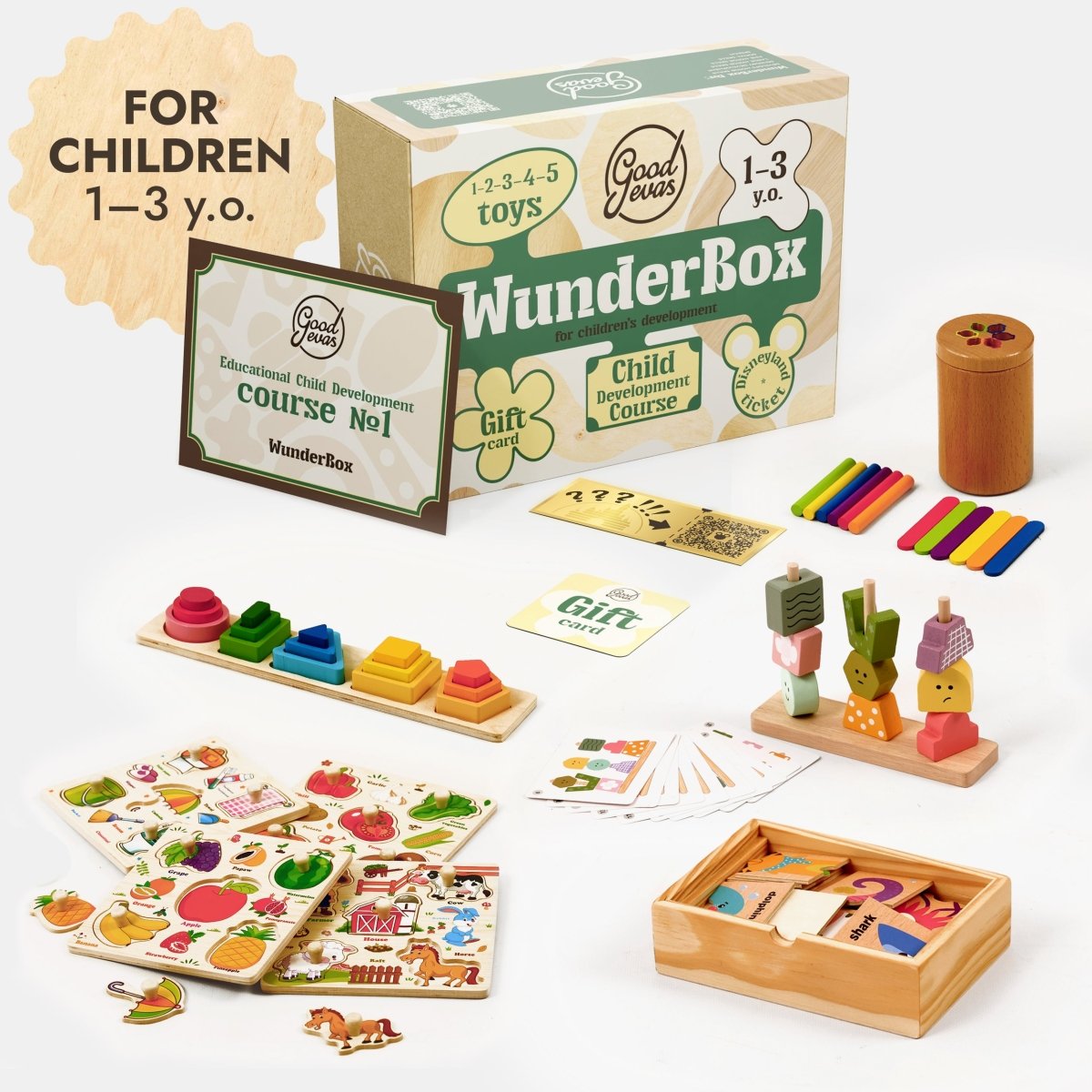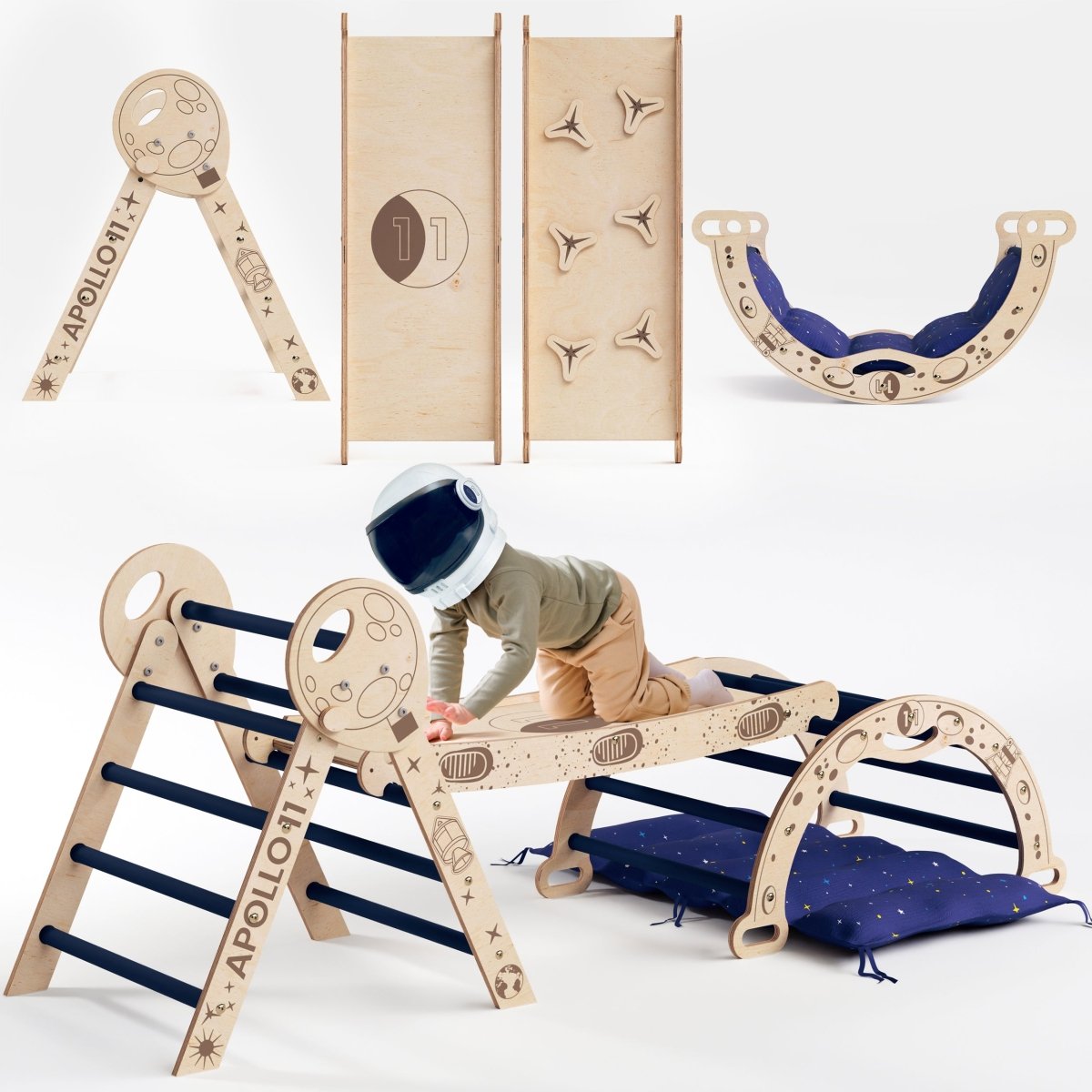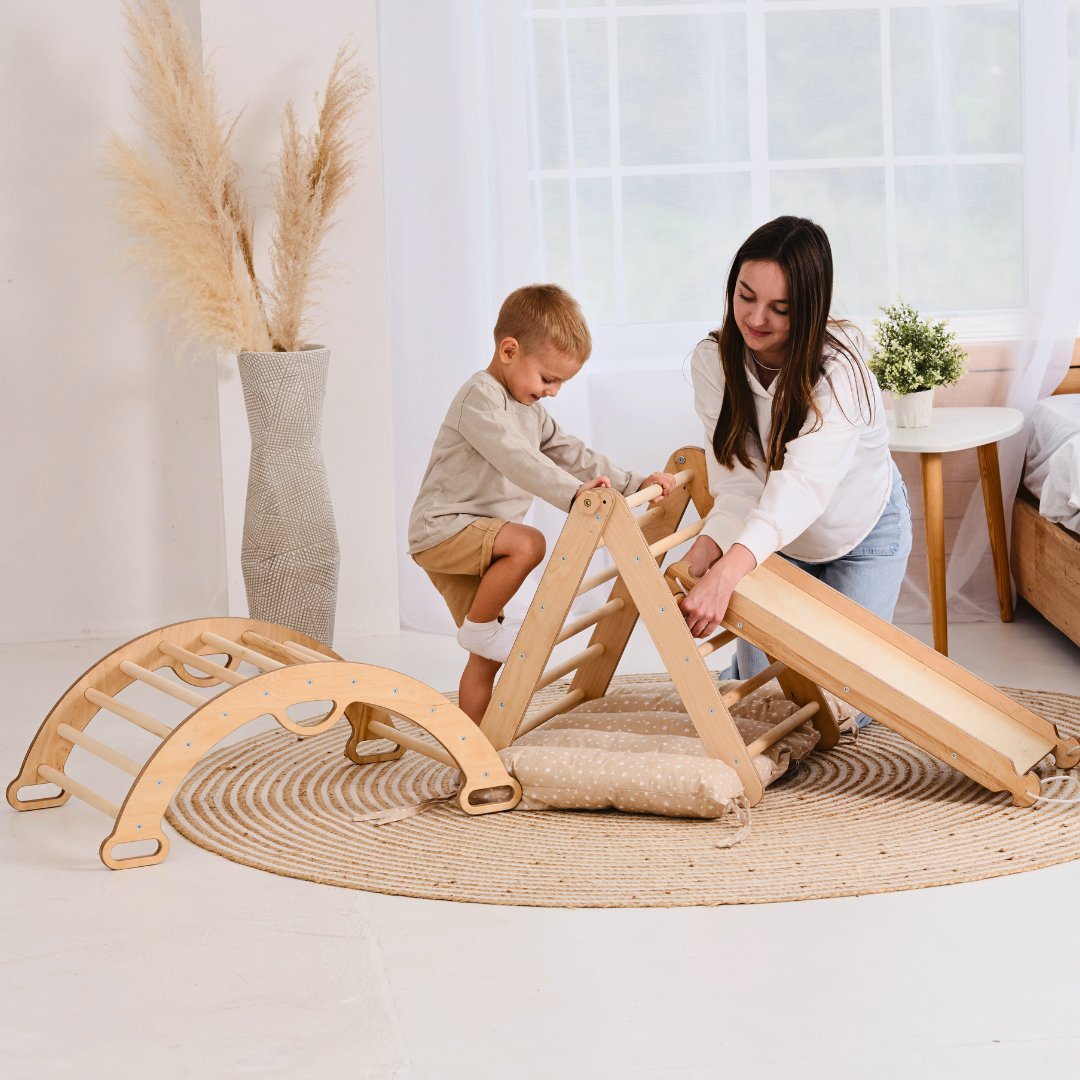Elevating Childhood: The Role of the Montessori Arch in Toddler Growth
Introducing the Montessori Arch: A Beacon of Holistic Child Development
Welcome to our comprehensive exploration of the Montessori Arch – a beautiful and timeless staple of Montessori philosophy. In this comprehensive guide, we will traverse the core concepts and the versatile applications of this beautiful, yet astoundingly effective child development tool.
Essentially, the Montessori Arch is an educational catalyst that excites the child's natural curiosity, and supports self-directed, hands-on learning experiences. Designed with a keen understanding of a child's growth stages, it's not merely an item in the room but a carefully crafted environment to nurture holistic development.

Source: epl.ca
Throughout this article, we will unravel the multi-dimensional benefits of the Montessori Arch. From its embodiment of the 'isolation of difficulty' principle to its significant contribution to the development of toddlers. Furthermore, we will delve into the tremendous role it plays in sparking creativity and imagination and suggest ways to seamlessly integrate the Arch into your daily routine.
Finally, to help with the purchase of the Montessori Arch, we offer invaluable tips to help navigate the options and make a choice that is safe, appropriate, and enduring. We guide you through critical factors such as safety, size, aesthetic appeal, and durability to ensure your selection meets the child's needs perfectly.
We warmly invite you to embark on this enlightening journey with us. Dive in, and enjoy this exploration into the transformative world of the Montessori Arch!
Understanding the Simplicity of the Montessori Arch
The Montessori Arch, in its elegant simplicity, captures the essence of the Montessori philosophy - freedom within limits, self-directed activity, and hands-on learning. The Montessori Arch genuinely stands as an unparalleled asset in the sphere of child development. As a portal to exploration and a conduit for growth, it infuses the child's environment with an element of beauty that transcends aesthetic appeal. The Arch beckons with an allure that triggers curiosity, fosters burgeoning skills, and meticulously nurtures a space that becomes an integral part of their journey towards holistic growth.

Source: Pexels.com
Let's take a moment to appreciate the thoughtful design of the arch. Its structure is simple, yet sturdy, promoting a safe environment for the child's exploration. The arch's height and width are meticulously calibrated to match the child's physical dimensions and developmental stage. This careful consideration ensures that the arch is not too overwhelming nor under-stimulating, striking a perfect balance that entices curiosity and engagement.
‘Isolation of difficulty’
The simplicity of the Montessori Arch supports the principle of "isolation of difficulty," which is central to Montessori philosophy. This principle is a pedagogical strategy where learning materials are designed in a way that highlights one particular skill or concept at a time. The idea is to allow the child to focus and refine this specific skill without the confusion of multiple elements. It creates an environment where children can practise and master one thing at a time, fostering a deep sense of accomplishment and confidence.
The absence of flashy colours ensures that the child's attention remains focused. It eliminates sensory overload, allowing the child to fully engage with the task at hand. The result is a deep, immersive learning experience that truly embeds skills.

Source: Goodevas.com
Fostering Growth: How Montessori Arch Aids Toddlers' Development
The Montessori Arch is a dynamic instrument that effectively fosters numerous dimensions of a toddler's development, contributing to their physical, cognitive, and sensory growth.
Commencing with gross motor skills, the Montessori Arch serves as an attractive structure that invites toddlers to move around it or crawl through its inviting space. This active engagement enhances their body strength and balance, fundamental aspects of gross motor development. Moreover, this simple, yet compelling arch encourages toddlers to understand their body's relationship with the surrounding space, hence promoting spatial awareness. As the child navigates around, beneath, or alongside the arch, they instinctively grasp the concepts of over, under, and through, and gain a comprehension of their physical capabilities and boundaries.

Source: First5california.com
While seemingly simple in its function, the Montessori Arch significantly enriches cognitive development. The unadorned nature of the arch leaves room for the child's problem-solving abilities to bloom. As toddlers ponder the many ways they can interact with the arch - be it crawling under it or manoeuvring around it - they are faced with delightful challenges that stimulate their cognitive capacities. The arch's simplicity and open-ended nature present numerous opportunities for creative problem-solving, fostering an early love for learning and exploration.
Boosting Creativity and Imagination with Montessori Arch
The Montessori Arch is a remarkable tool that cultivates creativity and imagination in toddlers. Unlike traditional toys that often come with predetermined instructions or objectives, the arch offers an open-ended play experience. Its minimalistic, yet engaging structure invites toddlers to venture into their own world of imaginative play, letting their creativity unfurl in myriad ways.
In its simplicity, the Montessori Arch becomes a blank canvas for the child's imagination. It can transform from a cave for an imaginary friend, a tunnel for a spectacular race, a home for their favourite stuffed animal, to a magical portal to an unknown world. Each interaction with the arch is a chance for toddlers to weave a new story, fostering their storytelling abilities, and further stretching their creative thinking.

Source: Istock.com
In fostering imagination, the Montessori Arch also supports emotional development. Imaginative play allows toddlers to express their feelings and thoughts, often acting out scenarios from their experiences or dreams. This form of play can help children process their emotions and build empathy, as they put themselves in various roles and situations.
Integrating Montessori Arch into a Toddler’s life
Obstacle Course
Use the Montessori Arch as a key element in creating an indoor obstacle course, transforming your living space into an exciting playground. With its distinct shape and structure, the arch provides the perfect challenge for your toddler's crawling, walking, or even hopping skills. Arrange a pathway of pillows or soft toys leading to the arch, encouraging your child to navigate their way to it. They could crawl under the arch, or carefully move around it. This dynamic and interactive setup not only adds fun to their playtime but also encourages independent exploration and instils confidence, as they successfully complete each little 'mission'.
Harnessing the Arch for Magical Daily Transitions
Finally, consider using the Montessori Arch as a symbolic gateway in your toddler's daily routine. For example, climbing over the arch could signal the transition from one activity to another, such as moving from playtime to mealtime. This can help your toddler better understand the concept of routine and transitions, reducing resistance to change. Similarly, at bedtime, passing under the arch could signify moving from the realm of waking to the land of dreams, making the transition to bedtime more magical and enjoyable.

Source: Goodevas.com
Choosing the Right Montessori Arch: Tips for Parents and Gift Givers
Choosing the right Montessori Arch can seem overwhelming, especially with the variety of options available. However, with a few practical tips, you can make an informed choice, whether you're a parent seeking to enrich your toddler's learning environment or a gift-giver hoping to bring joy to a special child's life.
Firstly, prioritise safety. Ensure the arch is crafted from non-toxic, child-safe materials, with a sturdy design that won't tip over. Next, consider the size. Choose an arch that is appropriate for the child's age and size, bearing in mind it should provide enough space for them to move under and around comfortably.
Look for the flexibility of the arch in integrating with other elements such as a climbing frame or slide board. A versatile arch that can be combined with additional components enriches the child's play environment, making it more engaging, adventurous, and conducive to their developmental needs. This modular approach enhances the arch's usability, making it a valuable and long-lasting asset in your toddler's growth journey.

Source: Goodevas.com
Finally, the durability of the arch is crucial. The arch should withstand years of play, evolving into a precious component of your child's childhood recollections. Thus, investing in a robust, long-lasting arch is a worthy consideration.
Final Thoughts
In recapitulating our voyage through the Montessori Arch, we appreciate its merits beyond just a plaything. It is a practical testament to the Montessori principles, striking a delicate equilibrium between self-guided discovery and structured learning. With its considerate design mirroring a child's developmental trajectory, it extends an open playground for their creativity while nurturing physical, cognitive, and emotional growth.
Choosing the right Montessori Arch is a careful balance of safety, aesthetic appeal, and durability. Remember, your investment is not just in a physical structure but an enduring aspect of your child's developmental journey.
As we conclude, remember that the Montessori Arch is more than an aesthetic addition to your child's space; it's a tool of exploration, learning, and creativity. Its purpose is to cultivate independence and nurture an inherent love for learning, making it an invaluable gift for any child. As you now venture to bring the magic of the Montessori Arch into a child's life, rest assured in the knowledge that this decision will foster a joyful, enriching journey of growth and discovery!
References:
- Montessori, Maria (1967) "The Absorbent Mind". Holt, Rinehart and Winston.
- Lillard, Paula Polk (1996) “Montessori Today: A Comprehensive Approach to Education from Birth to Adulthood”. Schocken.
- Seldin, Tim (2017) "How to Raise an Amazing Child The Montessori Way". DK.
- Pikler, Emmi (2007) "Peaceful Babies - Contented Mothers". Resources for Infant Educarers.
- Edwards, Carolyn Pope (2002) “Bambini: The Italian Approach to Infant-Toddler Care”. Teachers College Press.









Leave a comment